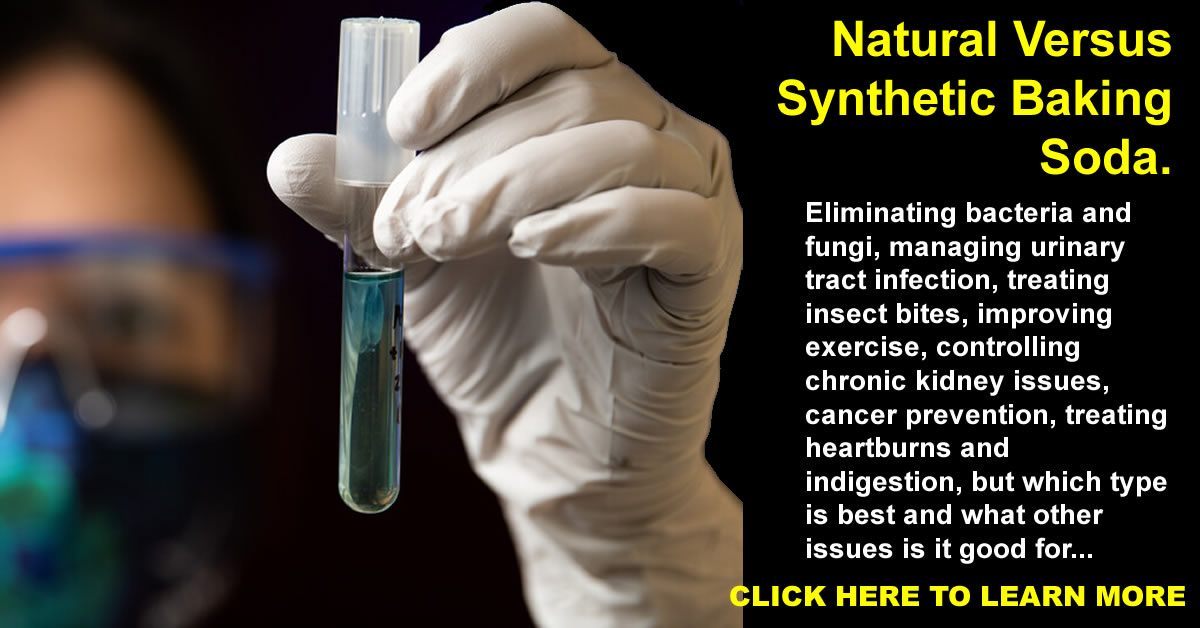Natural Versus Synthetic Baking Soda.
Dr. Hazel R. Parcells was considered the “Grande Dame of Alternative Medicine.” She lived to 106, and spoke highly on the use of Sodium bicarbonate to mitigate the toxicity of chemotherapy agents and radiation, thereby safeguarding patients from premature mortality and kidney damage. This is backed up by Dr. Mark Sircus, Ac., OMD, DM (P), an accomplished acupuncturist and doctor of Oriental and pastoral medicine, is renowned for his prolific writing and authorship of numerous groundbreaking medical and health-related books. In his monumental book titled “Sodium Bicarbonate Rich Man’s Poor Man’s Cancer Treatment” Dr. Sircus described the many benefits of Sodium Bicarbonate which included radiation. His methods are rooted in rigorous medical science and extensive clinical expertise, drawing not only from his own practice but also from the collective experiences of brilliant physicians worldwide.
Eliminating bacteria and fungi, managing urinary tract infection, treating insect bites, improving exercise, controlling chronic kidney issues, cancer prevention, treating heartburns and indigestion, treating mouth ulcers, teeth whitening/mouthwash, hair cleaner, toothpaste, human deodorant, shoe deodorant, extinguishing fires, cleaning pots and pans, fridge, dishwasher, and freezer odor neutralizer, garbage can, garbage disposal, and drain deodorizer, polishing silverware, cleaning and deodorizing carpets, clothing whitener, floor tile cleaner, bathroom wall and sink cleaner, removing pesticides on produce.[i]
Sodium bicarbonate is extracted and processed into a consumable product. Natural baking soda, also known as sodium bicarbonate, is typically harvested through mining processes.
Baking soda, also known as Sodium bicarbonate occurs naturally in the form of mineral deposits known as trona ore beds or nahcolite deposits. Trona is a mineral composed of sodium carbonate, sodium bicarbonate, and water, while nahcolite is a mineral that contains primarily sodium bicarbonate[ii]. These deposits are found in various locations around the world, including the United States, Egypt, and Turkey.
The process of mining baking soda is as follows; extraction of trona ore or nahcolite from underground deposits using methods such as traditional underground mining or solution mining. In traditional mining, miners excavate the ore from underground mines using heavy machinery and equipment. Solution mining involves injecting water into underground deposits to dissolve the sodium bicarbonate, which is then brought to the surface for processing.
For mining the trona ore or nahcolite undergoes a series of processing steps to isolate and purify the sodium bicarbonate. The ore is crushed, ground, and then dissolved in water to form a brine solution. The brine solution undergoes purification to remove impurities and separate the sodium bicarbonate from other minerals and compounds present in the ore. This purification process may involve filtration, precipitation, or other chemical treatments. Ideally if you are in the market for a pure Sodium bicarbonate, you do not what a product that utilized chemicals to extract it. You only want a product that uses an all-natural water extraction process to deliver a pure, natural product.
The crystallization purification process of sodium bicarbonate involves precipitating the compound from a brine solution through controlled crystallization. Initially, impurities are removed from the brine solution through filtration or other methods. Then, the solution is heated to promote the dissolution of sodium bicarbonate. As the solution cools under controlled conditions, sodium bicarbonate crystals form and precipitate out of the solution. These crystals are separated from the remaining liquid through filtration or centrifugation, yielding purified sodium bicarbonate. The controlled crystallization process ensures the formation of high-quality crystals with minimal impurities, making it an efficient method for purification.
The world’s largest supplier of sodium bicarbonate employs the Solvay Process to manufacture its baking soda, which involves the use of salt brine, limestone, and ammonia, an industrial method.
Although the Solvay Process involves a synthetic compound. The primary ingredients used—salt (sodium chloride) and limestone (calcium carbonate)—are naturally occurring minerals found in abundance in the earth’s crust. Ammonia the third compound, is a synthetic compound that is composed of nitrogen and hydrogen.
Ammonia poses significant dangers to both human health and the environment. As a highly toxic compound, exposure to elevated levels of ammonia vapor or ingestion of ammonia-containing substances can lead to irritation of the eyes, nose, and throat, as well as respiratory distress and lung damage[iii]. In the industrial production of sodium bicarbonate, the reaction is conducted by directing concentrated brine (salt water) through a pair of towers. Within the first tower, ammonia rises in bubbles through the brine, becoming absorbed by it. Subsequently, in the second tower, carbon dioxide ascends through the ammoniated brine, leading to the precipitation of sodium bicarbonate (commonly known as baking soda) from the solution[iv].
Ammonia is synthetically created through the Haber-Bosch process, a crucial industrial method developed in the early 20th century. This process combines nitrogen gas (N2) from the air with hydrogen gas (H2) derived from natural gas or other hydrocarbon sources under high pressure (around 200 atmospheres) and elevated temperatures (approximately 400-500°C). The reaction is facilitated by a catalyst, typically based on iron or ruthenium, to increase efficiency. The Solvay Process transforms these natural minerals into sodium bicarbonate (baking soda) through the chemical reactions.
Citations
[i] https://www.medicinenet.com/23_best_health_benefits_uses_of_baking_soda/article.htm
[ii] https://en.wikipedia.org/wiki/Sodium_bicarbonate
[iii] https://www.epa.gov/caddis/ammonia
[iv] https://en.wikipedia.org/wiki/Solvay_process

